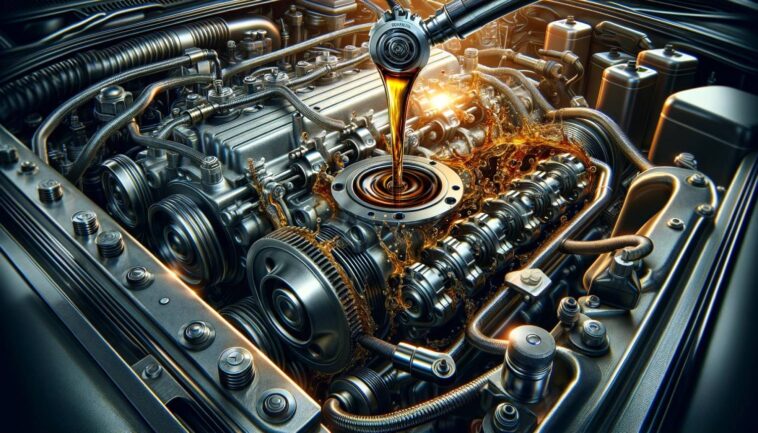Engine oil is one of your engine’s most important components that helps maintain your vehicle’s optimal working. The engine needs the engine oil to lubricate the moving components inside the engine. A combustion engine has a large number of moving components that move up and down to produce energy.
The engine oil is placed inside the compartment beneath the engine, and only the amount of oil needed by the engine reaches it through the pump; the remaining oil is kept inside the reservoir.
So, the question is, how does the pump know what engine oil the engine needs to lubricate the moving parts? Well, a small but efficient switch known as the oil level sensor gives this information to the pump.
Table of Contents
How Does Oil Level Sensors Work?
The oil level sensors work just in the same way as the typical float switches. They utilize magnetic reed switches, which are fixed inside stainless steel bodies. These magnetic switches are used for measuring the quantity of oil inside the engine.
The reed switch moves up and down inside the engine according to the level of engine oil inside it. When the level is full, then the switch moves up, and the oil pump is turned off. Now, when the oil is utilized by the engine components, the level will be decreased, and the reed switch will move downwards. This will again open the circuit, and the pump will start pumping oil toward the engine.
This cycle goes on until the car is running because the engine components will keep utilizing the oil, which will cause the levels to go low. The oil pump will pump more oil into the engine to fulfill this demand.
Unusual Engine Noise
The engine oil lubricates the moving parts to decrease friction and protect against wear. If the oil level is inadequate, lack of lubrication will produce a number of alarming noises.
If oil levels are low, critical engine parts such as pistons and bearings cannot be lubricated enough.
Therefore, when there’s no oil between these components as they contact one another, you can hear knocking or banging sounds. This sound, therefore, usually indicates that the engine is taking a tremendous beating.
This is a severe warning, implying that metal parts are gouging into each other with nary an oil film to provide their protection. If you hear unusual sounds from the engine, then you should get it checked by any reputed auto repair shop in Houston.
Engine Oil Checklight Turns On and Off Repeatedly
The engine oil light is one of the most important indicators on your car’s dashboard, telling you when there may be problems with your engine oil system.
The intermittent illumination of the engine oil light is one of the main symptoms that a faulty oil sensor has caused malfunctions.
This light is supposed to blink momentarily when you start the car as a way of reminding yourself whether or not the warning system itself is working.
But if the oil sensor is bad, while driving, one may see a light flash on and then off again. This means that there’s some difference in readings for what should be the same level of oil.
If the oil sensor malfunctions when there is actually a problem with the engine’s oil levels, this might also cause a brief delay in lighting up the engine oil light.
In certain cases, the light may not illuminate at all, even when the engine is running with deadly lows of oil. Lacking timely warnings, drivers may get a false sense of security and will not take prompt action.
Causes of Oil-Level Sensor Problems
General Wear and Tear
Wear and tear is a normal process that develops over time in response to the constant pressure on mechanical components, damage caused by environmental factors, or just ordinary use.
Oil sensor contains several moving mechanisms. Long operation and changes in oil pressure engine vibration may gradually damage these movable parts.
Additives and detergents are added to engine oil to enhance its lubricating capabilities as well as help clean the engine. However, these chemicals can also cause wear and tear on the materials that make up the oil sensor.
The engine compartment is a hot environment, and the sensor that checks for oil must be constantly exposed to heat generated by the engine.
Eventually, this heat stress can cause the sensor’s materials to degrade, damaging its structural integrity and capabilities.
Contaminated Oil
Contaminants such as dirt, debris, metal particles, or solids from the breaking down of sludge can change its consistency and properties.
If the oil sensor comes into contact with impure grease, it will be difficult to give correct level readings. These contaminants inhibit the sensor from detecting true oil levels in the engine.
Reduced Oil Flow Through the Sensor:
The altered viscosity of oil may be due to contamination. This change in viscosity can prevent oil from passing through the oil sensor. It may malfunction if the sensor does not receive a continuous stream of oil.
Oil sensors usually have seals and gaskets to prevent oil from leaking or wetting the internal components. With the passage of time, these seals can get worn out, lose their elasticity, or become brittle.

